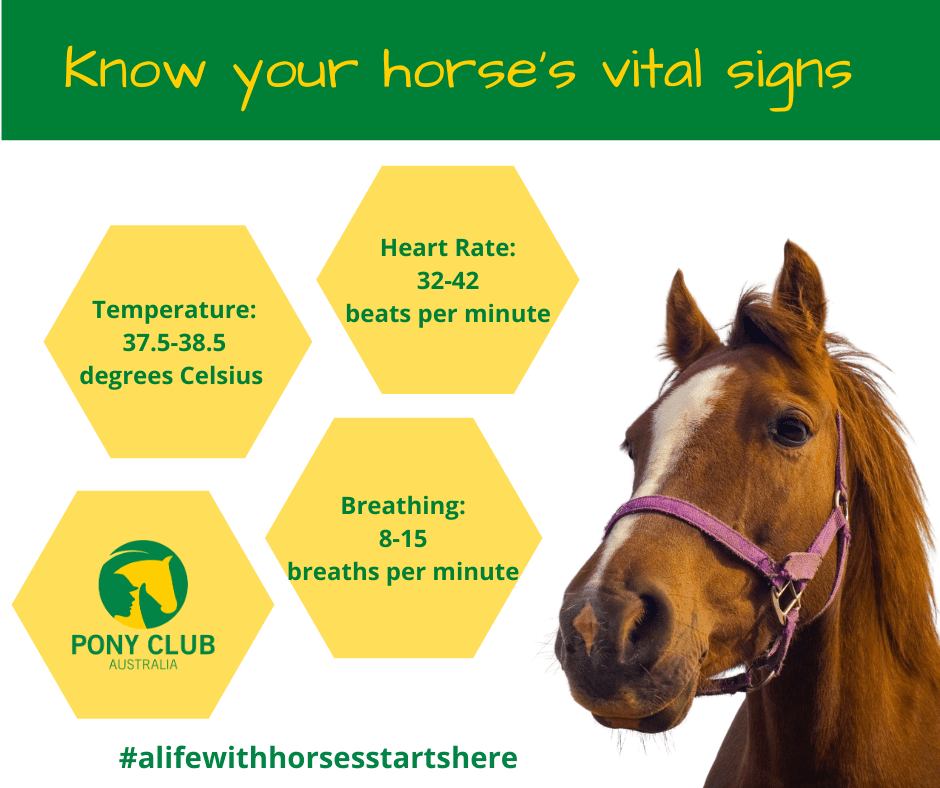Knowing your horse’s vital signs and what is normal for him will make it much easier for you to take good observations for your vet, and to know when to call the vet in the first place. Read on to find out how to take your horse’s temperature, heart rate and breathing.

The normal range for temperature is between 37.5 and 38.5 degrees Celsius and if your horse’s temperature is above this range it is very important to get veterinary advice quickly.
The normal heart rate range is between 32 and 42 beats per minute and respiration rate between 8 and 15 breaths per minute. Both heart rate and respiration rate increase with exercise or stress so to know your horse’s resting heart rate and respiration rate, you should practise taking it at home when he is calm and hasn’t just been worked or running around in the paddock.
Temperature is taken using a thermometer, usually digital, inserted into the rectum. Always have the horse secured in a safe place and preferably have a handler to hold him for safety. Stand to the side and make sure the horse knows you are there before you lift his tail. A smear of Vaseline on the thermometer is helpful. Aim to slide the thermometer down the wall of the rectum rather than straight into the middle where you may insert it into a ball of manure which will give you a reading that is slightly out.
The heart rate is taken with a stethoscope held against the ribs just behind the elbow on the left hand side of the horse. You will hear a ‘lub-dub’ sound for each heart beat. Count the number of beats heard in a 15 second period (one quarter of a minute) and then times this number by 4 to get the heart rate reading. If your horse is quiet and will stand still well, counting the number of beats heard in a 30 second period and doubling it will give you an even more accurate reading.
You can also feel for a pulse without a stephoscope by using your fingertips to feel the space along your horse’s jawbone under his cheek for a cordlike structure about the thickness of a pencil – this is his transverse facial artery. The easiest way to take his heart rate using this pulse it to curl your middle and ring fingers toward your palm, gently pressing the cord against the inside of his left jawbone so you can feel the pulse and count the beats. Do not use your thumb for this as you may feel your own pulse instead of your horse’s!
The respiration rate is easy to calculate just by watching your horse’s nostrils or his flanks. Remember to only count the inspiration (breathing in) or expiration (breathing out) not both. One breath includes one inspiration and one expiration. Watching either his nostrils or his flanks, count how many full breaths he takes in 15 or 30 seconds and calculate his respiration rate as you did for his heart rate.
Regularly check your horse’s vital signs at rest and keep a record somewhere handy, such as your veterinary first aid kit so that you learn more about your horse’s normal. This will be important information for deciding if you need to call the vet and helping the vet make sense of your horse’s situation.
